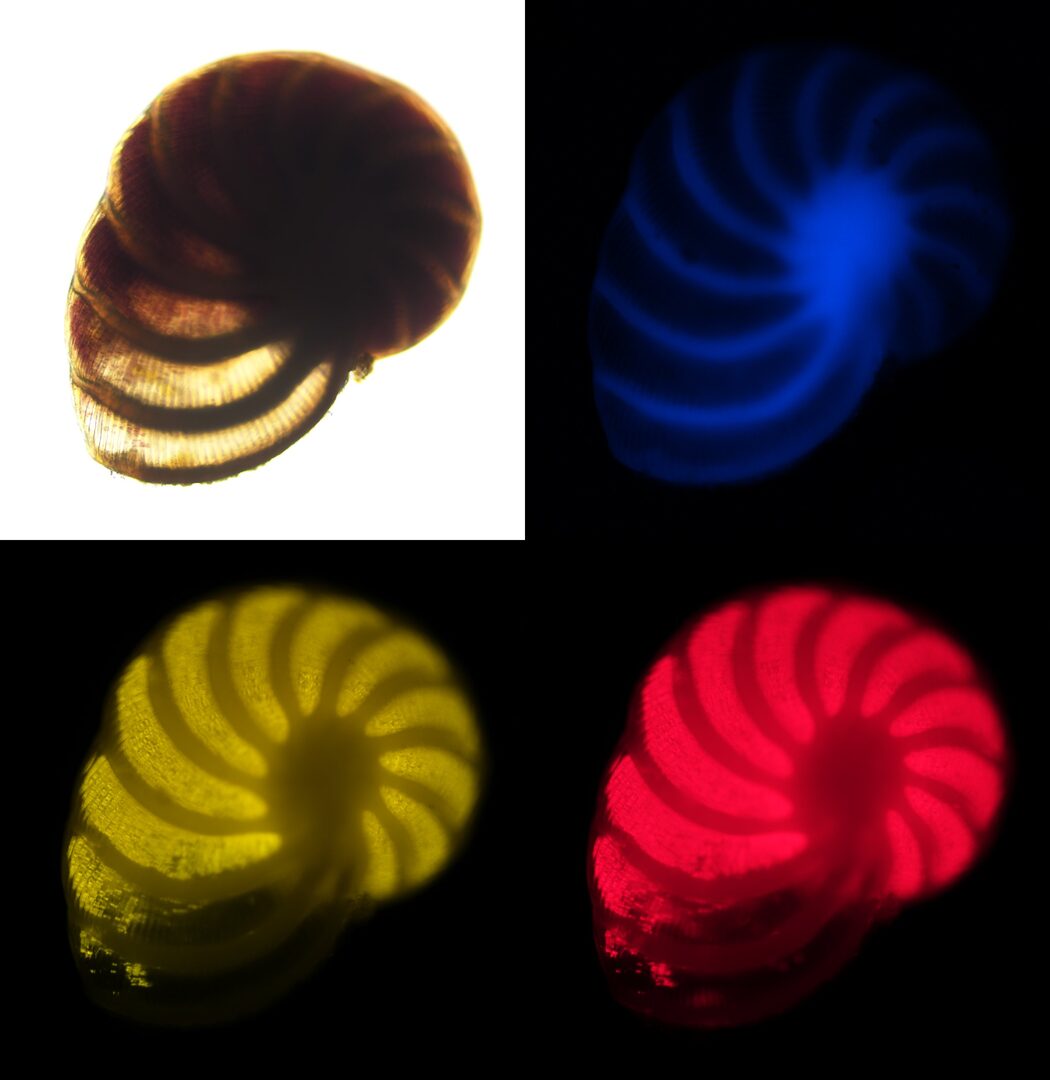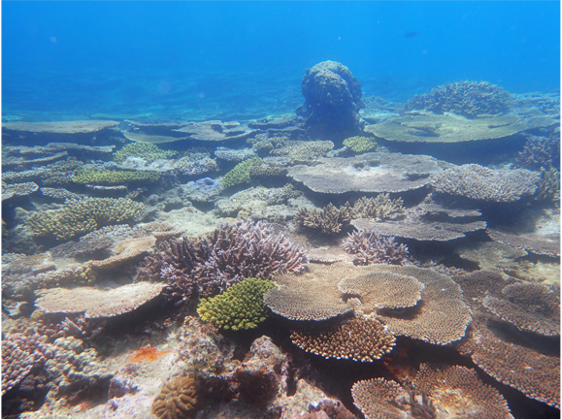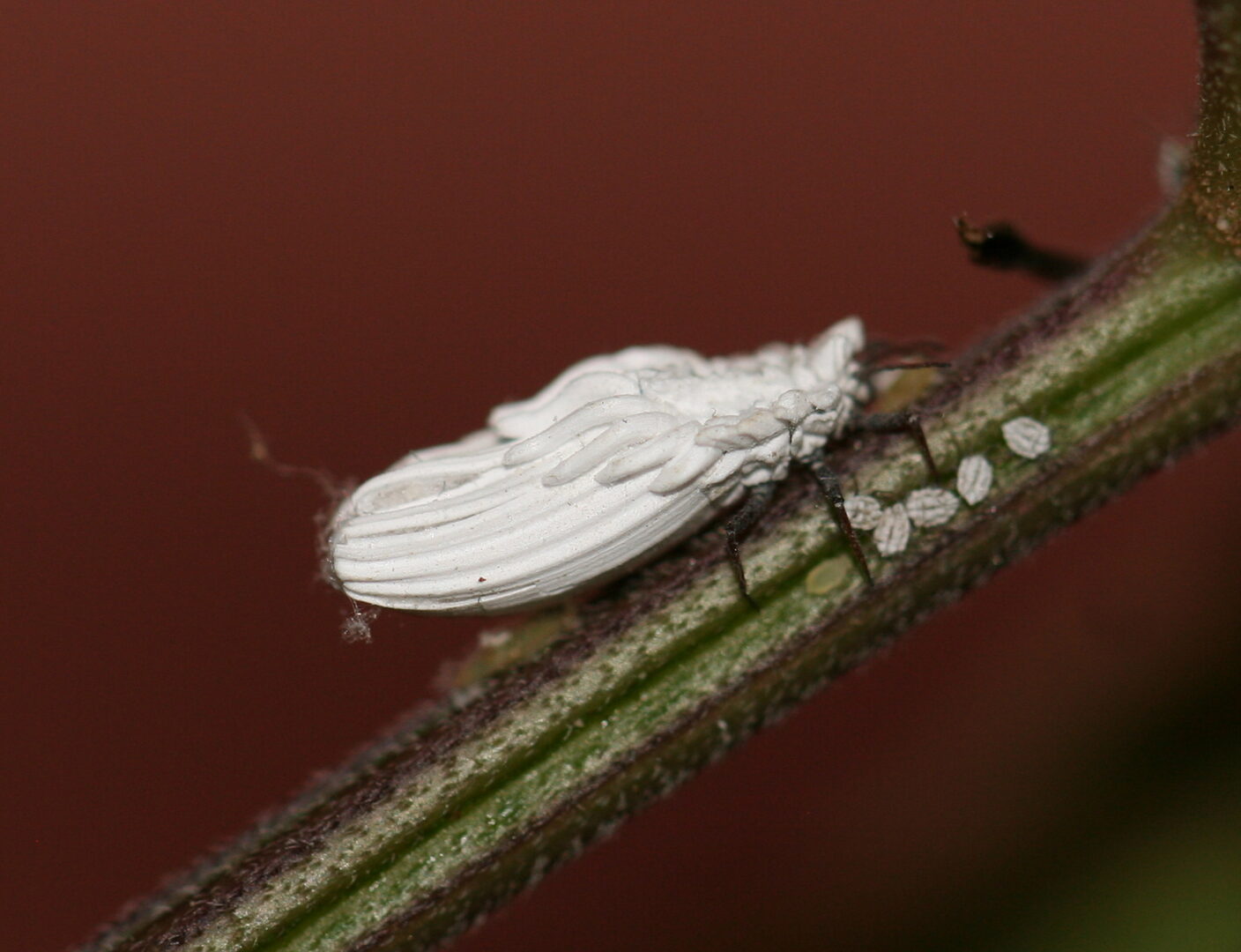FY2020 Annual Report
Evolution, Cell Biology, and Symbiosis Unit
Assistant Professor Filip Husnik
Abstract
The Evolution, Cell Biology, and Symbiosis Unit studies the effects of symbiotic interactions on the evolution and cell biology of the involved symbiotic partners. We are especially interested in the role of symbioses in major evolutionary transitions such as the origin of the eukaryotic cell and its symbiotic organelles, mitochondria and plastids. However, we also study much younger symbioses such as those found in microbial eukaryotes and animals. Currently, our research projects mostly focus on symbiotic microorganisms and organelles found in single-celled eukaryotes (foraminifera, dinoflagellates, ciliates, diplonemids, and a few other lineages), plants (parasites and mycoheterotrophs), and animals (corals and insects).
1. Staff
- Dr. Dewi Langlet, Staff Scientist
- Dr. Courtney M. Dunphy, JSPS Postdoctoral Researcher
- Dr. Maria Eduarda Alves dos Santos, Postdoctoral Researcher
- Dr. Jinyeong Choi, Postdoctoral Researcher
- Dr. Yumiko Masukagami, Research Technician
- Dr. Iines Salonen, Visiting Researcher
- Kimberlie Ward, Research Technician
- Chihiro Arasaki, Research Unit Administrator
- Yong Heng Phua, Research Intern
- Koh Ishikawa, Research Intern
- Sourjya Baibhabee Nath, Rotation Student
- Kamila Kozik, Rotation Student
2. Collaborations
2.1 Endosymbioses of diverse microbial eukaryotes
- Type of collaboration: Joint research
- Researchers:
- Dr. Hidetaka Nomaki, JAMSTEC
- Dr. Iines Salonen, JAMSTEC
- Prof. Kazuhiko Fujita, University of Ryukyus
- Assist. Prof. Kevin Wakeman, Hokkaido University
- Prof. Julius Lukes, Czech Academy of Sciences
- Emma George, University of British Columbia
- Dr. Vittorio Boscaro, University of British Columbia
- Prof. Patrick Keeling, University of British Columbia
2.2 Biology of coral symbioses
- Type of collaboration: Joint research
- Researchers:
- Dr. Masaru Mizuyama, AIST
- Dr. Akira Iguchi, AIST
- Assoc. Prof. James D. Reimer, University of Ryukyus
- 'Ale'a Dudoit, University of Hawaiʻi
- Assoc. Prof. Rob Toonen, University of Hawaiʻi
2.3 Eukaryogenesis and evolution of mitochondria
- Type of collaboration: Joint research
- Researchers:
- Dr. Akinori Yabuki, JAMSTEC
2.4 Cell biology and genomics of scale insect symbioses
- Type of collaboration: Joint research
- Researchers:
- Dr. Zdenek Paris, Czech Academy of Sciences
- Dr. Hirotaka Tanaka, Ehime University
- Assist. Prof. Yu Matsuura, Univerisity of Ryukyus
2.5 Genomics of parasitic and mycoheterotrophic plants
- Type of collaboration: Joint research
- Researchers:
- Assoc. Prof. Kenji Suetsugu, Kobe University
- Assist. Prof. Shota Sakaguchi, Kyoto University
- Dr. Petra Svetlikova, OIST
3. Activities and Findings
3.1 Setting up the laboratory
The unit was established in April 2020. In the FY2020, we have therefore been mostly setting up the laboratory space, establishing main model species in laboratory cultures or in the marine station tanks, recruiting, starting domestic and international collaborations, carrying out fieldwork around Okinawa, designing research projects, and collecting first data (see below).
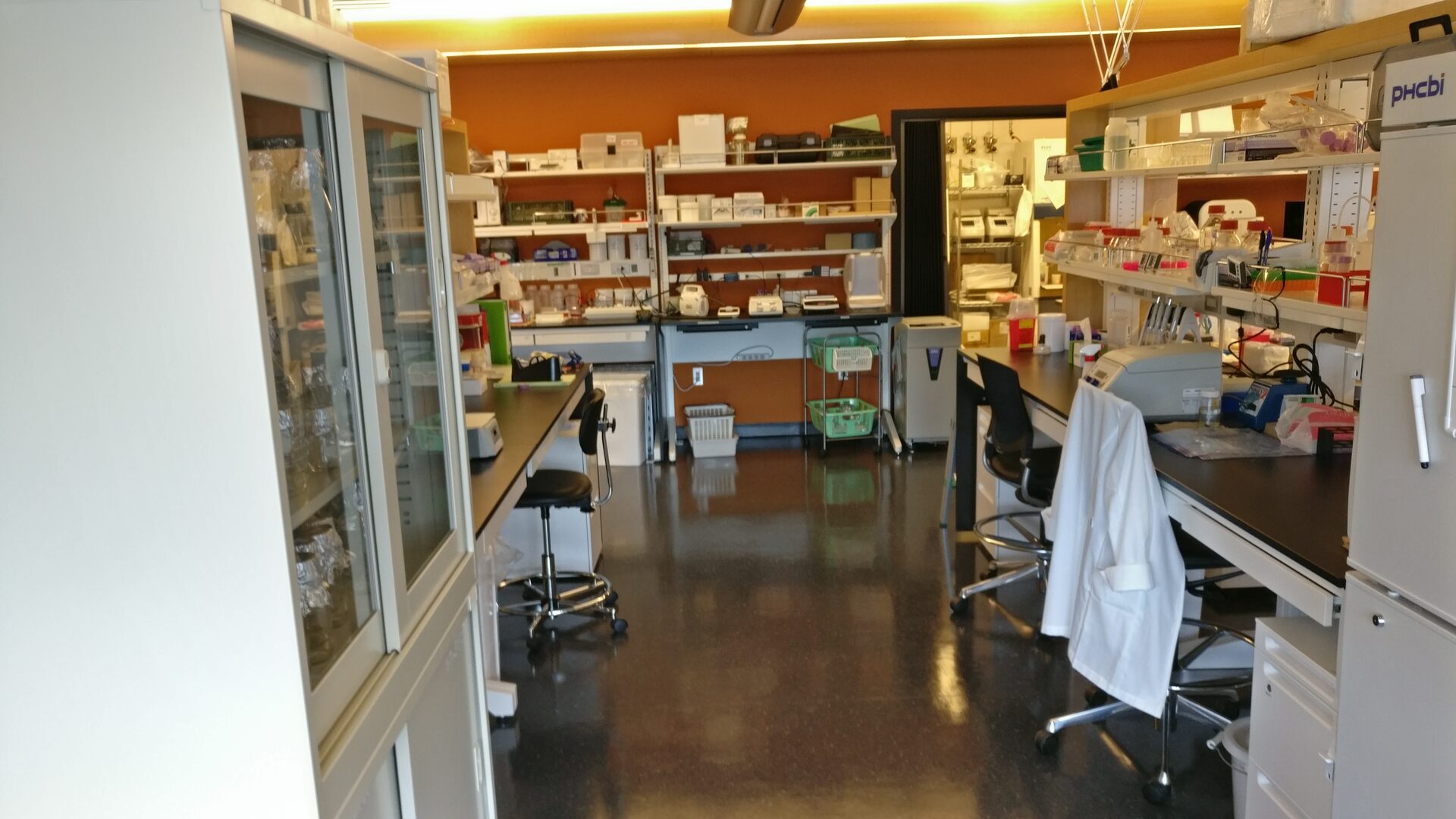
Figure 1a. Main laboratory space, left side.
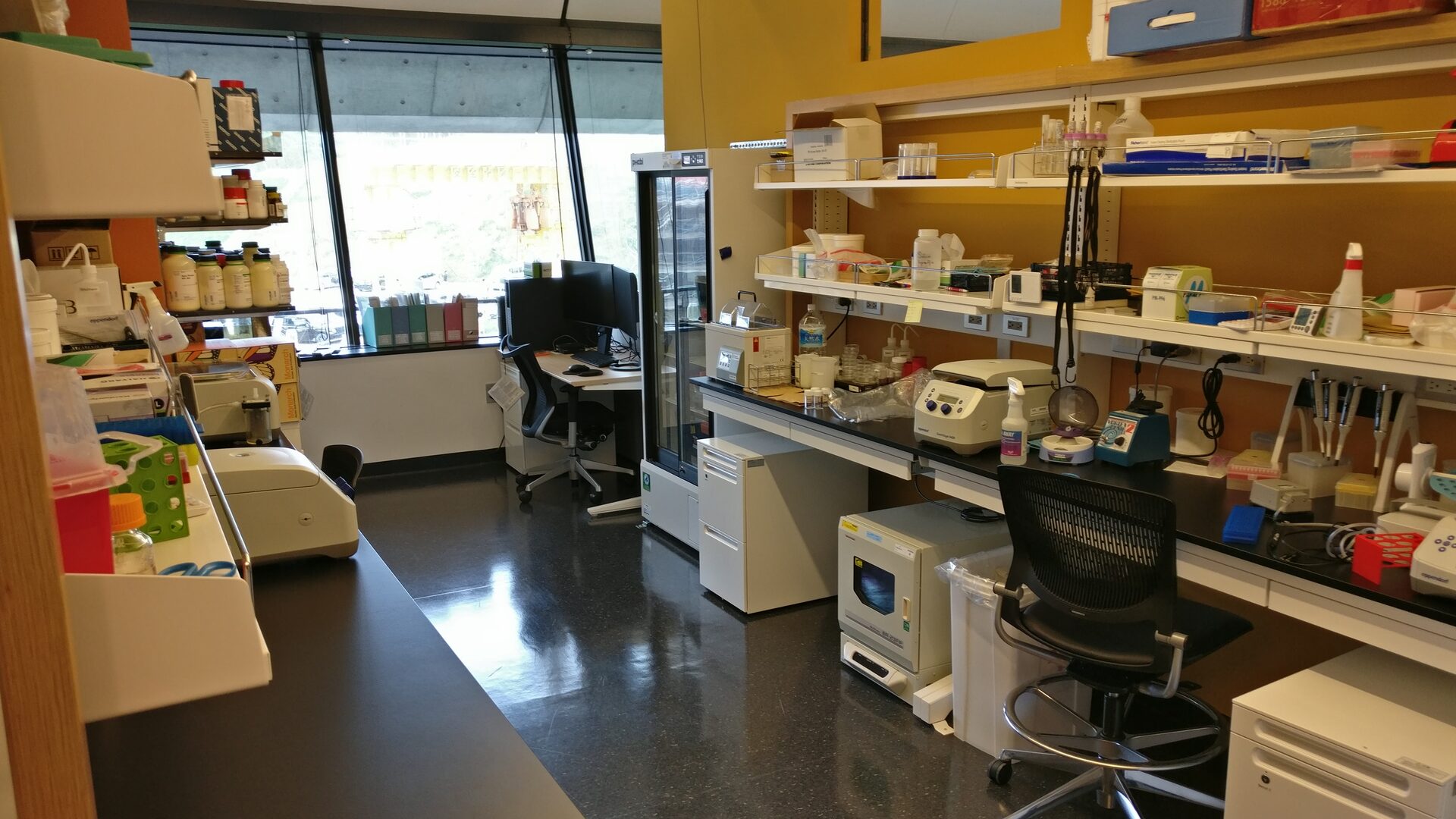
Figure 1b. Main laboratory space, right side.

Figure 1c. Microscopy and equipment room.
3.2 Research projects
3.2.1 Endosymbioses of diverse microbial eukaryotes
In this collection of smaller sub-projects, we study endosymbioses of many diverse single-celled eukaryotes. However, in the projects led by unit members, we focus mostly on bacterial and algal symbioses of foraminifera and dinoflagellates. Foraminifera are important ecosystem engineers in marine benthic ecosystems. On the other hand, dinoflagellates are mostly planktonic and they produce toxins and form harmful algal blooms (red tides). Both of these protist groups are very rich in symbioses, yet extremely understudied. In the FY2020, we have carried out extensive fielwork around Okinawa to collect many diverse marine species from coral reefs, mud flats, and mangroves. Analyses of the symbiont diversity, evolution, and function are currently in progress. Additional species from the deep sea are being sampled and analyzed in collaboration with JAMSTEC.
3.2.2 Biology of coral symbioses
Coral reefs would not exist without symbioses between the coral animal and diverse microorganisms. The most important photosynthetic symbionts of corals are dinoflagellates from the Symbiodiniaceae family (also called zooxanthellae). However, there are many other protist, bacterial, and archaeal symbionts in corals and we mainly focus on those less understood symbioses. Our projects mostly revolve around their diversity, population genomics, evolution, response to anthropogenic disturbances, and function. In the FY2020, we have set up multiple field sampling sites and laboratory tanks for controlled experiments, established a large collection of coral samples, and performed preliminary analyses.
3.2.3 Eukaryogenesis and evolution of mitochondria
This is a largely experimental project that was only started recently. Several model species were established as laboratory cultures and used for method testing.
3.2.4 Cell biology and genomics of scale insect symbioses
The project is a continuation of my former research. Although it was only fully restarted in my unit in early 2021, we have already managed to collect numerous scale insects around Japan (including notorious pests in Okinawa), establish several species in laboratory colonies, and test novel cell biology methods for studying their symbioses.
3.2.5 Genomics of parasitic and mycoheterotrophic plants
In this collaborative project with prof. Kenji Suetsugu (Kobe University), we provide our expertise in eukaryotic genomics and plastid evolution. For example, Balanophora species (B. fungosa on the right) are parasitic plants with extremely reduced plastid genomes which are also the most AT-rich genomes reported so far.
4. Publications
4.1 Journals
- Bain SA, Marshall H, de la Filia AG, Laetsch D, Husnik F, Ross L: Sex‐specific expression and DNA methylation in a species with extreme sexual dimorphism and paternal genome elimination. Molecular Ecology 2021, in press; https://doi.org/10.1111/mec.15842.
- Mathur V, Kwong WK, Husnik F, Irwin NAT, Kristmundsson A, Gestal C, Freeman M, Keeling PJ: Phylogenomics identifies a new major subgroup of apicomplexans, Marosporida class. nov., with extreme apicoplast genome reduction. Genome Biology and Evolution 2021, 13 (2): evaa244; https://doi.org/10.1093/gbe/evaa244.
- Husnik F, Hypsa V, Darby A: Insect—symbiont gene expression in the midgut bacteriocytes of a blood-sucking parasite. Genome Biology and Evolution 2020,12 (4): 429-442; https://doi.org/10.1093/gbe/evaa032.
4.2 Books and other one-time publications
Nothing to report
4.3 Oral and Poster Presentations
- Husnik, F. What can we learn about the origin of mitochondria and plastids from much younger endosymbioses? OIST-RIKEN Joint Symposium, OIST, Okinawa, April 6-7 (2011).
- Langlet, D., Husnik, F. Foraminiferal symbiont diversity and role in the benthic ecosystem functioning in Okinawan mudflats. OIST-RIKEN Joint Symposium, OIST, Okinawa, April 6-7 (2011).
- Santos, M.E.A., Reimer, J., Husnik F. Apicomplexan-coral symbioses: diversity and function. OIST-RIKEN Joint Symposium, OIST, Okinawa, April 6-7 (2011).
- Svetlikova, P., Suetsugu, K., Sakaguchi S., Husnik, F. On the way to heterotrophy: ecophysiology and genomics of Okinawan parasitic and mycoheterotrophic plants. OIST-RIKEN Joint Symposium, OIST, Okinawa, April 6-7 (2011).
5. Intellectual Property Rights and Other Specific Achievements
External funding acquired by unit members:
- JSPS Postdoctoral Research Fellowship (Maria Eduarda Alves dos Santos, from September 2021)
- JSPS Postdoctoral Research Fellowship (Courtney M. Dunphy, from December 2020)
- JSPS Grant-in-Aid for Early-Career Scientists (main PI Yumiko Masukagami; FYs 2021-2023)
- JSPS Grant-in-Aid for Scientific Research B (F. Husnik co-PI; FYs 2021-2023)
- JSPS Grant-in-Aid for Early-Career Scientists (main PI F. Husnik; FYs 2021-2022)
- Aure Hawaii-Okinawa grant (Filip Husnik and Maria Eduarda Alves dos Santos co-PIs; FY 2020)
- JSPS Grant-in-Aid for Research Activity Start-up (main PI F. Husnik; FYs 2020-2021)
6. Meetings and Events
6.1 Conference: 2nd Electronic Symposium on Protistology - Oceania & Asia (ESOP-OA)
- Date: June 23-24, 2020
- Venue: Online (https://protist.online/)
- F. Husnik one of organizers
- 17 speakers
6.2 Seminar: Deep-sea benthic ecosystems and biogeochemical cycles revealed by in-situ experiments at the western Pacific abyssal plain
- Date: March 9, 2021
- Venue: OIST Campus Lab4
- Speaker: Dr. Hidetaka Nomaki (JAMSTEC)
7. Other
Nothing to report




